When it comes to gardening, few settings are as enchanting as the coastal landscape. The sound of waves crashing in the background, the soft sea breeze, and the unique flora and fauna make beachside gardens truly special. But gardening by the beach presents its own set of challenges and opportunities. In this article, we’ll explore valuable tips and tricks from the University of Florida’s Institute of Food and Agricultural Sciences (UF/IFAS) Florida-Friendly Landscaping (FFL) Program to help you create a thriving beachside garden.
Understanding the Coastal Environment (Protect the Waterfront)
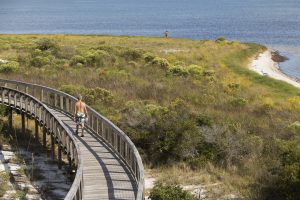
Before diving into beachside gardening, it’s crucial to understand the unique characteristics of coastal environments. FFL emphasizes the following key points:
- Salt Exposure: Coastal areas are often subjected to salt spray from the ocean. Saltwater can be damaging to many plants, so it’s essential to choose salt-tolerant species for your beachside garden.
- Sandy Soil: Sandy soil is prevalent near the beach, and it drains quickly. FFL recommends adding organic matter like compost to improve soil quality and water retention.
- Wind and Erosion: Coastal areas are windy, and strong winds can lead to soil erosion. Incorporating windbreaks like hedges or strategically placed plants can help protect your garden.
Plant Selection (Right Plant Right Place)
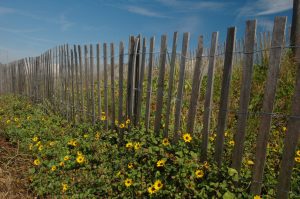
FFL advises gardeners to be selective when choosing plants for beachside gardens:
- Native Plants: Native species are well-adapted to local conditions and are often more salt-tolerant. They also provide valuable habitat for local wildlife.
- Salt-Tolerant Plants: Look for plants specifically labeled as salt-tolerant or salt-resistant. These species have evolved to withstand salt exposure.
- Drought-Resistant Varieties: Coastal environments can be dry, so consider drought-resistant plants that require less water.
Soil and Soil Amendments (Mulch & Recycle Yard Waste)
To enhance the quality of your beachside garden soil, FFL recommends:
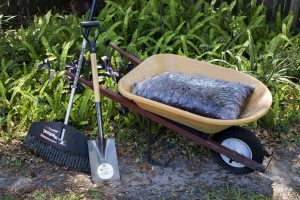
- Composting: Adding compost to sandy soil helps improve its water and nutrient-holding capacity.
- Mulching: Apply mulch around plants to conserve moisture, suppress weeds, and protect the soil from temperature fluctuations.
- Soil Testing: Get your soil tested to determine its pH and nutrient content. UF/IFAS can provide guidance on adjusting soil pH if necessary.
Watering and Irrigation (Water Efficiently)
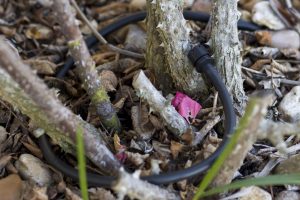
Efficient watering is essential in coastal gardens:
- Microirrigation: Consider using microirrigation systems to deliver water directly to the roots, reducing water waste and minimizing salt distribution.
- Rainwater Harvesting: Collecting rainwater can be an eco-friendly way to provide moisture to your garden.
Maintenance and Pest Management (Manage Yard Pests Responsibly)
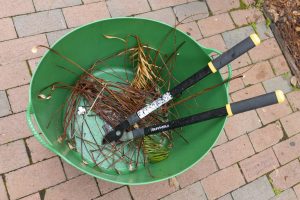
FFL offers insights into maintaining your beachside garden:
- Pruning and Trimming: Regular maintenance keeps your garden looking tidy and healthy.
- Salt Damage: Look for signs of salt damage on plants and take corrective actions as needed.
- Pest Control: Use eco-friendly pest control methods to protect your garden without harming the environment.
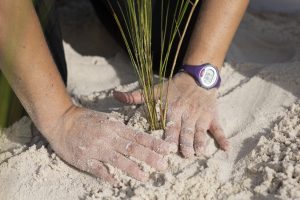
Designing Your Beachside Oasis
When designing your beachside garden, consider factors like layout, hardscape elements, focal points, and seasonal changes. Florida-Friendly Landscaping encourages creativity while ensuring that your design suits the coastal environment.
Sustainability and Environmental Considerations
FFL emphasizes the importance of sustainable practices in beachside gardening. By protecting coastal ecosystems, reducing your carbon footprint, and engaging in community conservation

efforts, you can contribute to the preservation of this unique environment.
Gardening by the sea is a rewarding and fulfilling endeavor, and with guidance from UF/IFAS, you can create a thriving coastal garden. Whether you’re a seasoned gardener or just starting, these tips and tricks will help you make the most of your beachside oasis. So, grab your gardening gloves, feel the salty breeze, and let your coastal garden flourish.

For more information and resources on beachside gardening, visit:
- Salt-Tolerant Plants
- Coastal Landscapes
- Tackling Soil Salinity Problems in the Home Landscape
- Five Salt-tolerant Native Plants for Coastal Florida
Happy gardening!
 8
8
